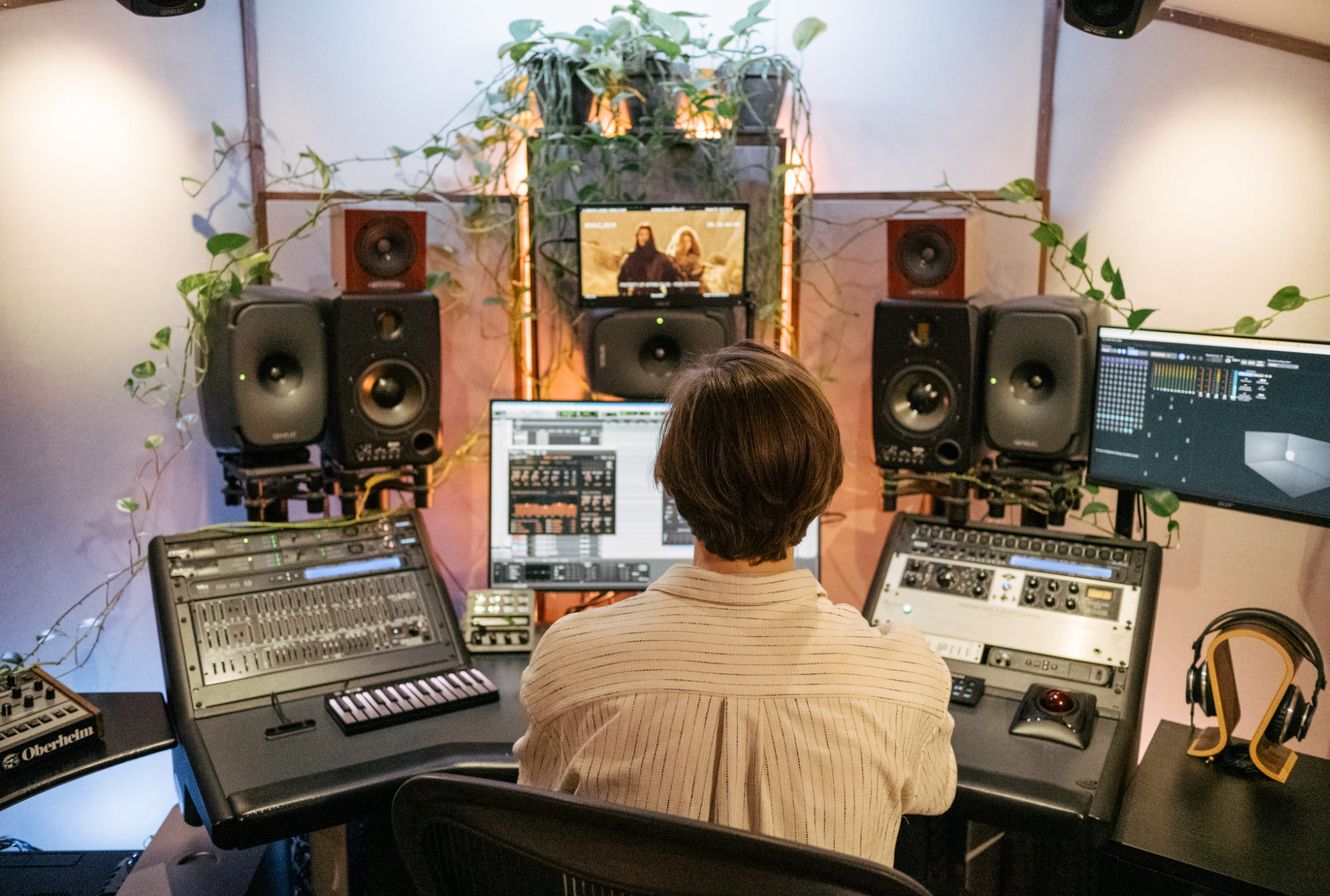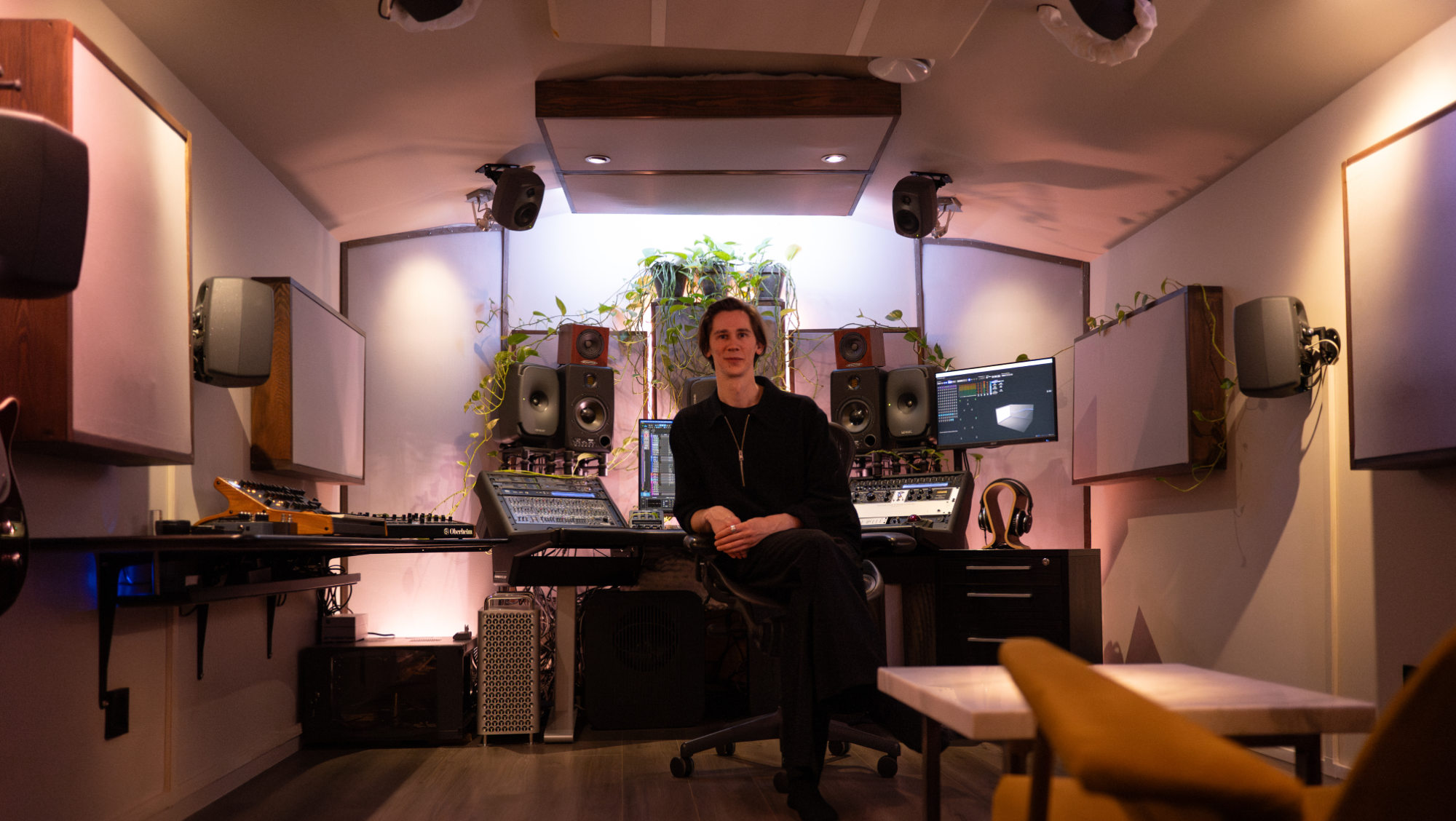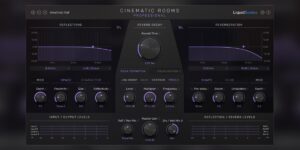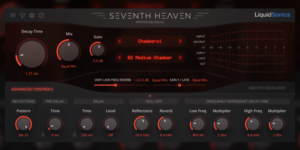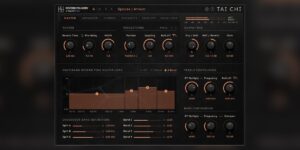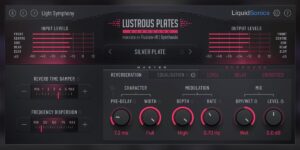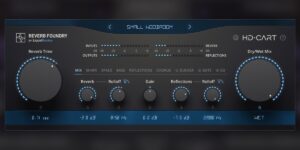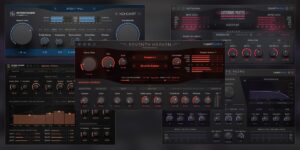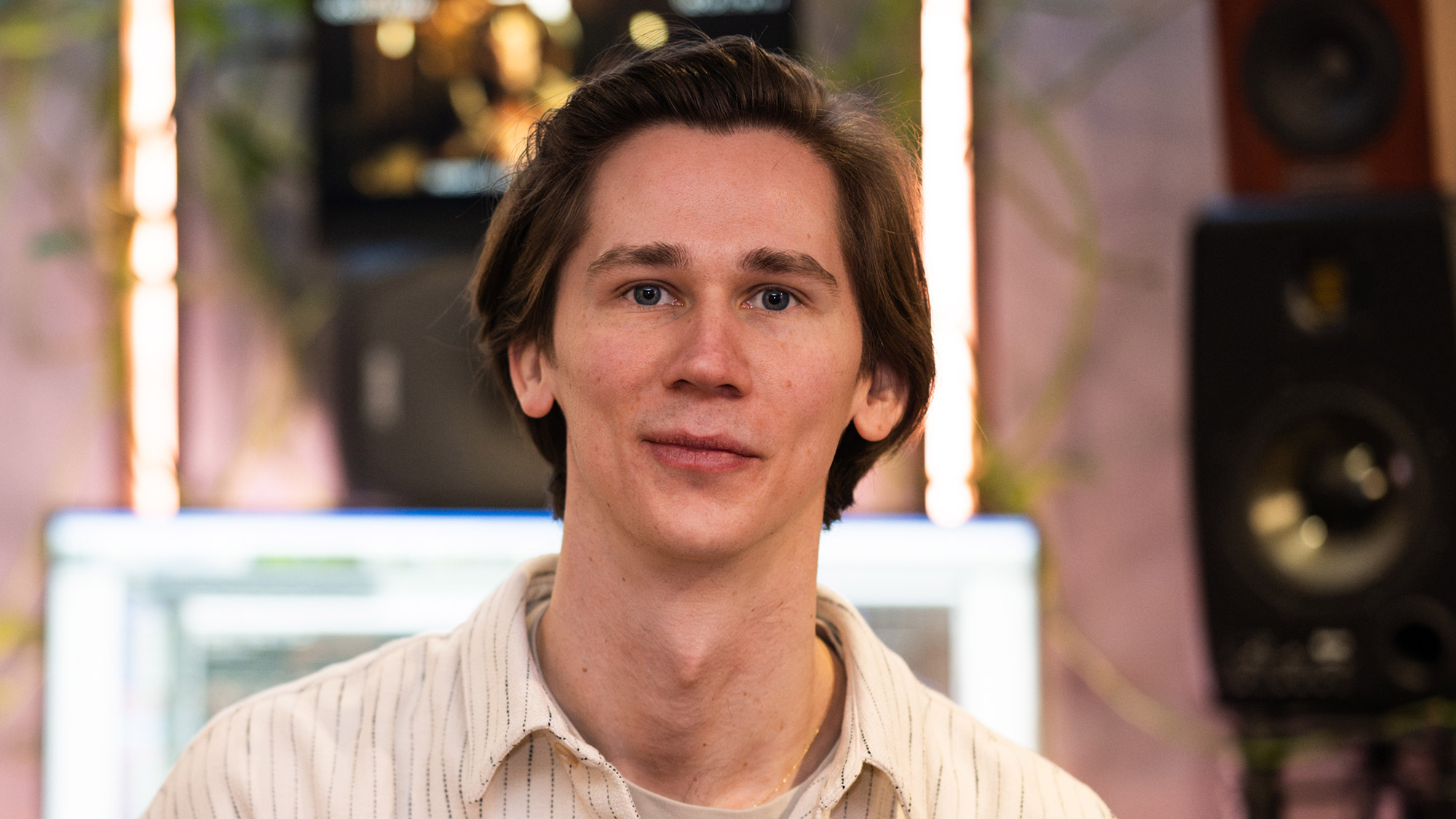
Gabriel Lundh‘s journey into audio production began in his familial garage-turned-studio, where his father’s encouragement led him to pick up the bass guitar. At high school he delved deeper into recording and honed his skills as a musician, however, after high school, Gabriel realised his true calling lay in the production side of music and film. Later, Gabriel’s diverse freelance work, ranging from drone camera operator to corporate photography, provided the financial foundation for his burgeoning studio endeavours and, thanks to his pragmatic approach to life, he eventually established the dome. – one of the first Dolby Atmos-equipped music studios in Sweden.
Here we talk to Gabriel about working in Atmos, using Cinematic Rooms Pro as much for spatialisation as reverb, and designing sounds with Tai Chi…
What got you into Atmos?
I got into Atmos because, in late 2019, a colleague of mine asked me what I knew about Atmos and I didn’t know anything. I started reading about it and realised that it’s a channel agnostic format, which means that you don’t have to mix for a specific layout anymore and that just made so much sense to me.
My biggest concern with 5.1 and 7.1 is the fixed nature of the formats – you essentially have to decide from the start of a project what it will be delivered in and you have to have different templates depending on what you choose. Of course, you can always upmix or downmix these formats, but with Atmos you have so much more flexibility because you’re mixing into a three dimensional room with coordinates and not into a pre-decided channel-based bus. The Atmos mix can later be translated into any channel-based format or even a binaural mix for headphones, which just makes so much more sense to me. So nowadays I do most of my work in Dolby Atmos, for the flexibility.
So do you have a stereo version of the mix and an Atmos version of the mix, or do you have one mix and you switch the channels widths around?
Usually I have one session and I start with the 2.0 monitoring setting. So essentially I’m doing a stereo mix within the Atmos format, but I still choose placements and even binaural render modes for the Atmos mix, even though I cannot fully hear it yet. As I’ve done a lot of work in the format, I usually get to a pretty good place on the immersive mix even before I switch to an immersive speaker layout. When the stereo mix is approved, I do a Save As of the session and start switching between 7.1.4 on speakers and binaural with headphones and tweak the mix until I’m happy. In some cases, the stereo is derived from the exact same mix as the Atmos version, but this depends on the project.
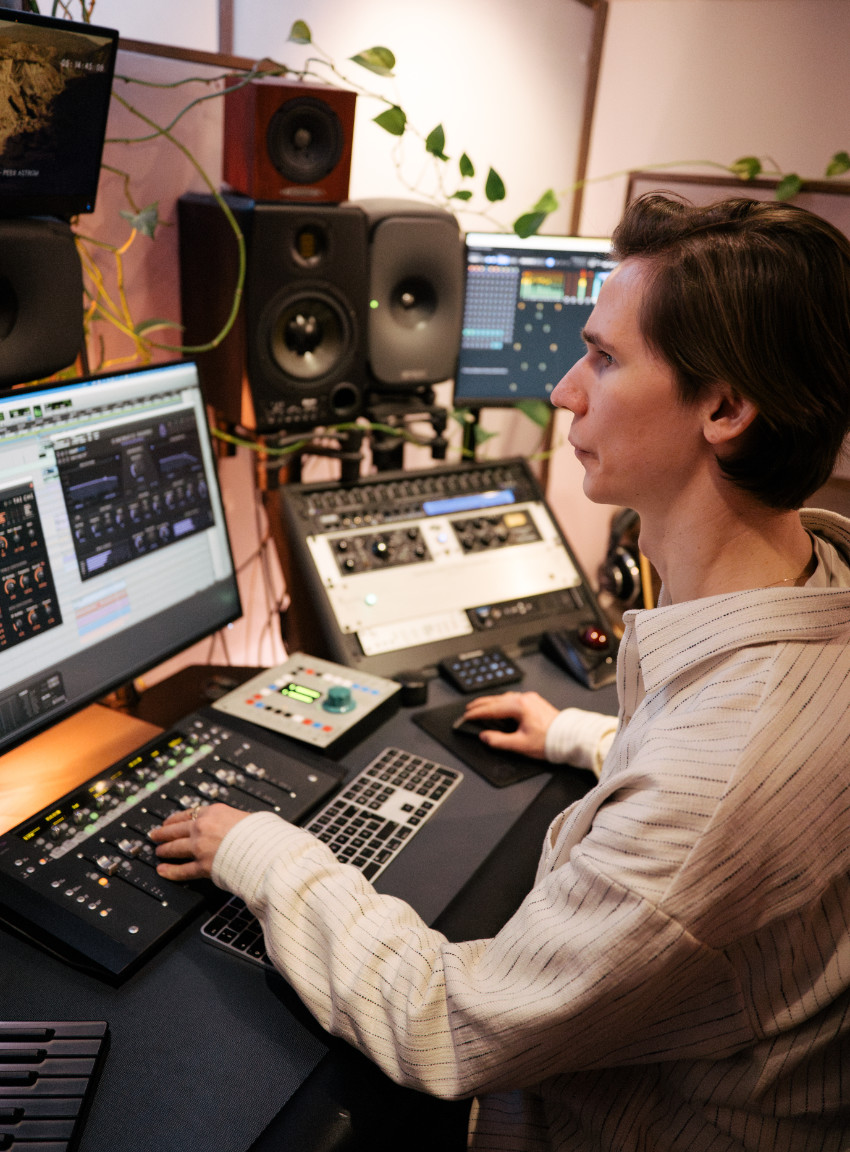
Early on I was doing the common trick of having one send that goes to a lot of returns and spreading those out in the space and doing this whole scheme of different pre-delays and different dampening or different reverb times. It was a hassle, if you wanted the correct placement into the reverb the routing got even more complex and messy.
I think the ability to choose the panning that goes into the reverbs is a huge thing in surround. I’ve had times when I disengage the follow main pan in the surround reverbs to disengage the source from the reverb, creating a different sense of spatialisation. To sum up your question, I definitely did those schemes and still do sometimes, with regular stereo verbs, but it was always a bit messy. But if, for example, a client has sent me a stereo mix session that I’m trying to recreate in Atmos, sometimes I actually take the reverbs that they are using on the vocals or so, and use the exact same setting but in the “reverb scheme” with lots of returns which can work quite well.
So I’m guessing LiquidSonics made it easier?
The LiquidSonics reverbs made it so much easier, especially Cinematic Rooms which, for me, is the absolute go-to of surround reverb plugins. I think Cinematic Rooms solved the issue of quickly and efficiently being able to sculpt a sound, maybe having a longer pre-delay in the rears or have an even longer tail in the ceiling. Because it’s so easy to do it, you actually do it. I think that’s the big difference here, using those reverb schemes, you can achieve similar results, but it takes more time and thinking so most likely you won’t do the same adjustment as you have something else in to fix or do in the mix.
Do you find it actually helps you creatively because, in a sense, you’re trying to move fast through a mix?
Yes. As it’s so easy to manipulate, I tend do to more adjustments that benefit the sense of space in the Atmos mixes. I’ve been using it so many different ways, from regular room spaces to the classic reverb effects and I’ve even been using it for backroom or placement effects, like placing stuff 100% wet in the room emulations.
So you might have a piece of library music that’s part of a movie and you actually then pass it through Cinematic Rooms to give it some sense of space within an Atmos mix?
Exactly. And I want to touch upon that because Cinematic Rooms hasn’t only been a reverb for me, it’s been a sort of upmixer which is a really weird thing to say because it’s not really true, if you know what I mean? I find it’s an efficient tool for spreading and spatialising elements without necessarily adding audible reverb or using conventional upmixers. Essentially what I’m doing is emulating some sort of room or using more of the reflections of the room rather than the actual reverb tail.
So, you take the reverb off and you just use the early reflections of it, and then use that to give whatever piece of music is passing through it a sense of space that it didn’t originally have?
Yes, not on everything of course, this is just for specific elements, but it’s effective. It could be a synth part or some sort of textural element that you want to spread in the room without giving it a sense of reverb. The early reflections / reverb dial is super helpful for this because it’s so easily accessible and therefore I can just choose a preset and then dial back the reverb tail. I use this “trick” more than upmixers to be honest, as the upmixers I’ve tried can give varying results when switching between different formats, like going from 7.1.4 to binaural. Sometimes the elements being upmixed can get louder or quieter and it’s not always consistent in the same way that I feel Cinematic Rooms is.
Cinematic Rooms has been designed to fully downmix correctly so they are totally decorrelated reverbs and reflections, therefore safe to bring back down to stereo and so on without phase issues.
Exactly, and it’s so helpful! I’m constantly going from 7.1.4 to binaural or 2.0 and therefore I try to lean into tools that I know will translate. However, not at all to say that upmixers don’t have a purpose, but I mostly use them when I know the deliverable is a fixed channel based layout and won’t move between formats.
As I’m constantly in the Atmos format, I’m constantly thinking about the different downmixes in terms of where I place sounds, how that placement will affect the different playback mediums like the Apple Spatial or what will happen when played back in Dolby Binaural. One example is that, if I’m placing an element outside the “speaker positions” of the 7.1.2 bed that Atmos has to offer, I always use objects – as this helps the renderer to understand what to do with the element in a downmix or a binauralisation of the mix, which minimises the risk of unpleasant volume surprises when switching between monitoring formats.
What kind of presets are you leaning into on Cinematic Rooms, because some people say turn it on and use the one that’s there?
Yes, Amethyst Hall is fantastic! But depending on the material I definitely switch between different rooms. For strings and score elements, it’s been immensely helpful to use the stage presets, the Orchestration Hall I think it’s called, or the Philharmonic Stage. Don’t forget to try the modulation options on the reverb as it can create a more “effect reverb” rather than just being a room emulation. I completely overlooked this setting until my colleague pointed me to it!
The studio preset “Rich Tracking” is also fantastic! Great starting point for spatialisation effect without adding too much tail. Again, here I sometimes use the Early Reflections / Reverb Tail dial to minimise the tail and just use it as an “upmixer” of sorts.
And do you just use them as a preset or do you actually do some tweaking as well?
I definitely tweak if necessary, especially using the “speaker buttons”, maybe I prolong the reverb time in the ceiling or do different pre-delays for the back surrounds. The proximity feature is also super interesting and worth a shot. Again, with that feature I usually choose different settings per speaker pair.
And do you do that to get a sense of throw on the sound? You’re trying to get the sound to kind of envelop people?
Yes, sort of. It’s such a nice effect to have the sound floating from the front to the back with these different pre-delays and it can help give the reverb a unique character! It’s been a common practice in the Atmos community from the start and I’m absolutely not the inventor of this effect – but needless to say I love to use it!
We’ve talked a lot about Cinematic Rooms, but there’s five plugins in the range. Do you use any of the others? Do you use Seventh Heaven?
Yes, I do. Mostly for more “effect-oriented” reverbs. I sort of try to split them – when I’m doing something that’s supposed to sound like a realistic room I use Cinematic Rooms, when I want to use a plate or something else from the Bricasti reverb sound palette, I use Seventh Heaven.
And you’ve recently started playing with Tai Chi, how’s that going?
Yes! I find it a perfect plugin for designing sounds, it’s got so many features when it comes to fine tuning reverb and spatialisation effects. The modulation options with the chorus and the detune is so much fun. It’s not what I expected from a reverb but it’s a very fun and useful tool.
And have you been playing much with the multipliers that determine the length of the reverb on the specific bands?
Yes I have – it’s a great feature and it opens up a lot of possibilities! I’ve also been playing a lot with the bitcrush effect and it’s really cool that you can bitcrush the reverb tail, or you can only bitcrush the early reflections to create so many different sounds.
Have you played much with the dynamics in all the reverbs?
I’ve been using the ducker and it’s so much easier than doing it manually with sidechain triggers and separate compressors on the returns. That’s a thing that I love with LiquidSonics plugins – the functions are there so you can use it quickly, without any hassle. I’ve been using it more with Seventh Heaven but also with Cinematic Rooms.
It’s very noticeable that Cinematic Rooms was built from the ground up to be an immersive reverb tool. As I told you before, it has everything that you want to have at your finger tips!
Thanks to Gabriel for his great interview!
From the humble start in a garage to the Dolby Atmos equipped ‘the dome.’ studio, Gabriel’s journey shows that with a combination of passion and hard work great things are possible. Gabriel’s approach melds creativity with technology, pushing audio boundaries while maintaining a deep respect for the art of music and sound. He’s also a great guy to be around… that’s an added bonus.
Photography – Elisabeth Jubelin
Try Mixing In Atmos With LiquidSonics Reverbs
LiquidSonics has a range of five surround and Atmos immersive reverbs, one of the largest selections in music and post production. Working in Atmos is becoming increasingly accessible, so it’s easier than ever to try an Atmos mix yourself with native support in DAWs such as Cubase and Logic Pro.
Whether you’re working in EDM and rock where Tai Chi‘s luscious chorus can create a wonderful richness around synths and guitar, or on a classical/score mix that would benefit from Cinematic Room‘s transparency and lighter touch, we have a reverb for you.
All of the LiquidSonics reverbs are available to try for free for 14 days, just head to our demos page to drop a code into your license manager and pick up the installers from the downloads page.
If you like what you’ve seen and heard our reverbs are available in the LiquidSonics store and don’t forget that existing customers can use their loyalty discounts for some incredible stackable savings.

